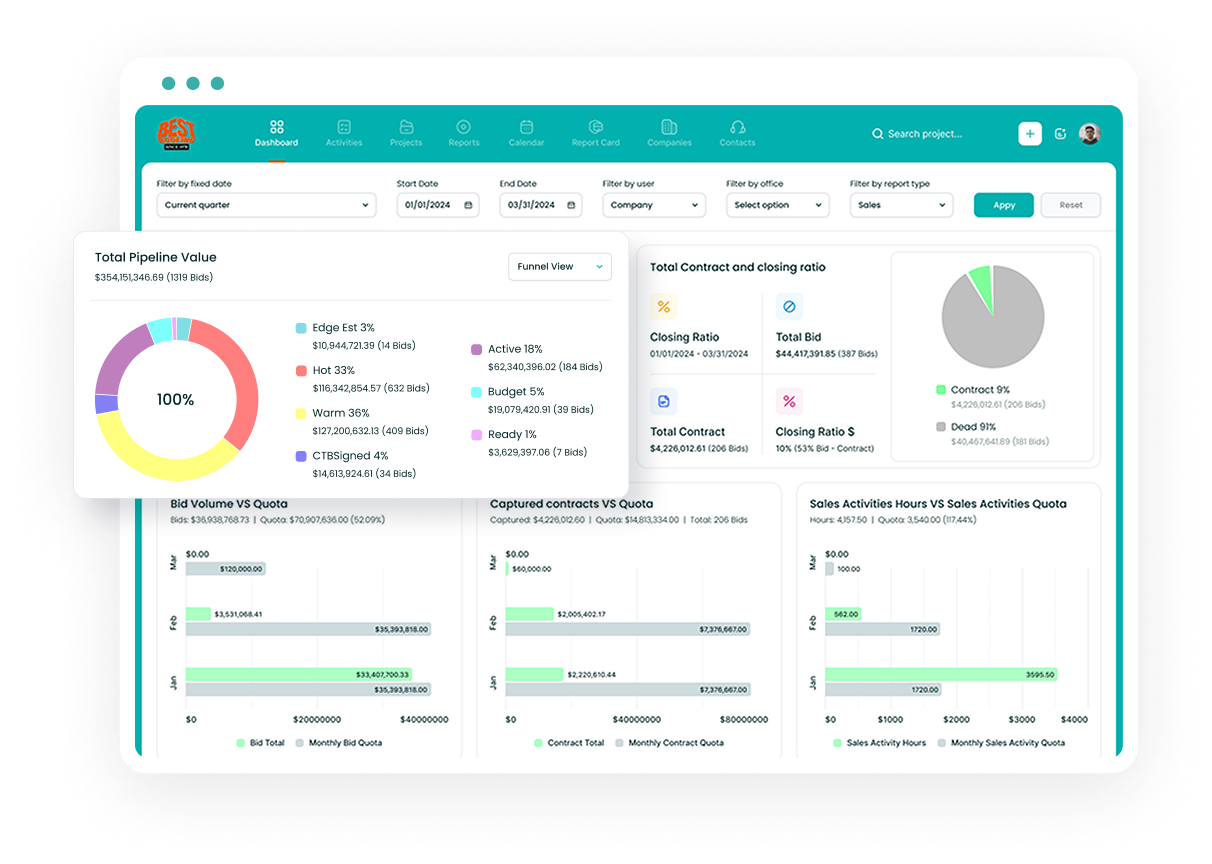Tips for Managing a Remote Team of Contractors
In the wake of the global pandemic, many people fortunate enough to maintain their employment will be working from home. Managing remote teams requires a different skill set than managing direct reports in an office setting.
In the wake of the global pandemic, many people fortunate enough to maintain their employment will be working from home. Managing remote teams requires a different skill set than managing direct reports in an office setting.
More people than ever before are working remotely. In fact, over the last ten years, remote work has grown 91%, and research indicates that we are well on our way to half of the workforce working remotely in some form.
This shift in the way we work is being driven in large part by independent contractors, freelancers, and full-time employees looking for more flexibility. Organizations that want to incorporate remote workers and better facilitate remote working must adjust their policies and procedures accordingly.
While self-driven workers like independent professionals tend to thrive working remotely, other personality types might require more oversight or communication. Productivity may vary from worker to worker, and it can be challenging to convey a sense of culture and unity with distance. When managing remote teams in particular, all of these aspects must be taken into account.

1. Set expectations
The most important thing you can do when you remotely manage a team is to establish shared expectations with everyone involved. These expectations encompass everything from virtual work hours to project scheduling and adjustments to production timeline charts.
Let your team know how you plan to manage them from afar. For example, random video calls may be quite jarring if employees aren’t expecting them.
Setting expectations is likely best done through one mass call and reinforced through one-on-one conversations or small group outreach. You can discuss nuanced expectations for various members of your team during that one-on-one time, which will be critical if you manage a cross-functional team.
Assign a few team members to help you document any necessary changes to your typical project management steps. Share these documented changes to project management processes and other core functions so employees can easily reference them.
Think of these process documents as living things that may evolve over time as your team settles into remote work.
Tips for setting expectations:
Setting expectations seems like a no-brainer, but how you communicate these expectations has a lot to do with how your team will respond and adhere to them. Here are a few tips to set and properly communicate your expectations when you remotely manage a team.
• Think inclusively: If you’re struggling to maintain your performance now that you’re remote, your employees probably will be, too. Learn from your own remote situation to influence your expectations.
• Be realistic: Unrealistic expectations will set you and your team up for failure. You may need more time to figure out how to complete certain project components. Consider limiting project scopes until you’re fully operational in your new setup.
• Provide documents: It’s not enough to share your expectations over a video call. Your employees will greatly appreciate something material they can reference to be reminded of expectations and changes, especially in these globally trying times.
2. Conduct individual check-ins
This may be a no-brainer if you have a smaller team, but it’s critical to provide one-on-one face time with all of your team members. Hopefully your team doesn’t need constant supervision, but it’s important for everyone to know they can reach out for one-on-one support if needed.
It’s also important for you as a manager to provide a way for employees to discuss any issues they aren’t comfortable discussing in group settings.
Consider setting up a short one-on-one meeting (10 or 15 minutes) once or twice a week with everyone on your team. Be sure your team knows you’re available outside of that time, too, if anything comes up.
You don’t want to be intrusive or inefficient with unnecessary daily meetings, so it may take some trial and error to figure out the frequency of communication that works for you and your team as you learn how to remotely manage them.
Tips for remote work check-ins:
Here are a couple of tips for ensuring everyone on your team is being heard and getting the necessary face time with their manager while working remotely.
• Set repeating weekly meetings: Repetition is important for remote working. Set a brief weekly meeting with each of your team members that they can count on to relay performance info and discuss ideas and problems.
• Encourage multichannel communications: While there may be a temptation to make everything a video call, encourage employees to reach out via written channels to discuss simpler or smaller issues that don’t require a (virtual) face-to-face conversation.

3. Schedule weekly team meetings
In addition to weekly one-on-ones, it’s critical to bring your entire remote team together virtually at least once a week. You probably already have weekly or daily team meetings, and that shouldn’t change during remote working.
These meetings should remain professional and productive, but leave some room for humor and empathy to seep in. There’s nothing wrong with a dog barking or an occasional child running through the room.
Let your weekly meetings serve their professional purpose as well as humanize the work and the messaging avatars that have taken the place of in-person chats.
Tips for effective remote team meetings:
Here are a few tips for having successful weekly meetings with your remote team.
• Ensure connectivity: Technology giveth, and technology taketh away. Figure out how to consistently conduct weekly meetings with your entire team, and make sure everyone knows how to join and communicate.
• Humanize: Have fun with your team, and set a tone that’s conducive for business while also acknowledging that at least half of your team is still in their pajamas.
• Engage everyone: Consider ice-breakers and other engagement tactics to make sure everyone on your team has a voice during your full team meetings. The transition to a virtual environment might be tough for some of your team members.
Learn more about running successful sales meetings by clicking here.
4. Designate communication channels
A crucial expectation you’ll need to set for your remote team is which communication channels to use. Hopefully, you already have some remote communication tools in place.
If not, you’ll want to adopt a video conference platform as well as an easy-to-use messaging tool. Be sure to clearly communicate which platforms you expect your team to use to ensure everyone is on the same page.
Along with choosing and becoming proficient with the actual platforms, you also need to set precedents for which channels are appropriate for which types of communications.
Do you want to limit video calls for your sake and the sake of your team? If so, establish messaging and email as the preferred channels for most everyday communication needs.
Tips for using remote work communication channels:
There are tons of communication platforms you can adopt for your team. Here are some tips for designating your preferred communication channels.
• Identify “channel champions”: You’ll likely have one or two folks who innately take to a certain communication channel. Make that person a channel champion — someone who can help others who are struggling to use the tool.
• Ease of use: If you’re able to choose your communication system, make sure it’s easy to use. The last thing you want is to see people struggle to get into meetings or receive messages.

5. Prioritize outcomes over activity
Busywork does not benefit anyone, especially remote workers. It may be tempting to monitor when folks on your team are logged in and doing their work, but part of learning to remotely manage means understanding that outcomes should speak for themselves.
Trust that you and your talent management teams have put together a skilled (and responsible) group of people.
This applies outside of remote work, but it’s especially critical for managing a remote team. People have different habits and habitats that may be more conducive to productivity before dawn or during midnight hours.
As long as the work is good and outcomes are being met, there’s no reason to stipulate how work must be completed.
Tips for prioritizing outcomes with remote work:
While the journey may be the destination in some instances, the destination for your remote team is their endwork. Let the work they’re doing speak for itself rather than obsessing over how they get the work done. Here are a couple of tips to help.
• Don’t be rigid: As a manager, it’s critical you’re available for your team members in case they need help or have questions. However, it’s equally as critical to appreciate that they may have their own way of completing work and delivering ideal outcomes.
• Learn how they operate: Over time, you should start to see trends in how your individual team members operate remotely. You can discuss what you learn with your early birds or night owls to ensure they can maintain their preferred operating hours.
Consider investing in a project management tool that allows you to hold team members accountable digitally. Click here to learn more about Followup CRM’s new project management tool and how this can help with remote work.
6. Balance distractions
Learning to remotely manage a team requires at least an acknowledgement that distractions while working from home will be far more prevalent than in an office setting. Twitter, Netflix, dogs, children, and the lull of the couch don’t simply cease to exist when we work remotely. Distractions are bound to happen throughout the day.
What’s critical is that you, as a manager, sign off on the every-now-and-then distraction. Show your team that you’re fine with the occasional jaunt on Twitter or a bit of playtime with the dog. These distractions are healthy and inevitable, so fighting them is futile.
How to balancing distractions when working remotely:
Distractions are going to happen. Here are a few tips to make sure you and your team don’t feel guilty about the occasional loss of focus.
• Encourage openness: Distractions are none of your business as long as they’re not interfering with work performance. And if they are, you should strive to cultivate an open and accepting environment where employees can discuss struggles and work toward a solution.
• Create a place for shared distraction: Show your team you can embrace distractions by creating a messaging channel dedicated to sharing funny memes or going down the rabbit hole on Tiger King. Giving distractions their own, dedicated home will also give your team a way to avoid them, if they so choose, by muting the channel when they need to focus on work.
• Join in on the fun: Managers are humans, too. Show your team that a couple of distractions are fine by sharing in the fun.
7. Instill independence
Remote working consists of a give and take between the work and the outside world. Outside of meetings and required “office hours,” encourage your team to work from the park or take a free afternoon to bake bread. Instilling a sense of independence in your team is a critical part of learning to remotely manage employees.
Your team needs to understand they have their own agency to balance their workloads with their personal life and hobbies. Help them discover, cultivate, and improve their work-life balance by instilling a sense of independence in them.
Lead by example by blocking time on your calendar for yourself and your own activities. Create a shared experience multiple team member can participate in. Such independence is a valuable thing for a successful remote team.
• Share experiences: Dedicate a part of your weekly meeting for team members to discuss what they’ve been doing outside of work.
• Group project: Encourage team members to create a group project that anyone on the team can participate in. This will allow your team members to practice balancing the project with a regular workload as well as generate some camaraderie among them.
8. Practice patience and empathy
Learning to remotely manage a team will have its inevitable growing pains. Project planning might have to take a new form. Group meetings will feel different. Celebrating wins can become difficult.
But through all of the growing pains, the best thing you can do as a manager is to practice empathy and have some patience and compassion in your actions and communications.
Keep in mind that some people will adjust better to remote work than others. Some folks need the social interactions that come from being in an office with a team of colleagues. Be sure to dedicate some time to ensuring everyone is doing well in their remote work.
Tips for practicing patience and empathy:
Here are a few ways you can solve the problems you can solve as well as help team members cope with things that can’t be fixed.
• Set aside pre-meeting time: There’s a difference between running from meeting to meeting in the office and doing so over video chats. Take a minute or two to mentally gather yourself between video meetings so you’re giving your team your best self.
• Step away: Being a manager can be taxing, especially for a remote group. Be sure you’re practicing proper self-care and stepping away when you need to to ensure you’re at your best when your team needs you.
• Don’t fix the unfixable: Take the time to consider if the root of a frustration is a fixable problem or an immovable reality of working remotely. Try to let the latter be, and encourage your team to do the same. Your time and mental energy are better spent solving what you can and helping your team do their best work.
Work remotely and prosper
There are very real professional and personal benefits unlocked by remote work. Identify the benefits you can find with working remotely and help your team members do the same. Whether you are new to remote work or have been at it for a while, everyone will respond to it differently.
Creating a productive workplace that caters to various individual needs requires quite the balancing act. The eight tips we’ve listed above should help you effectively manage a remote team to maintain performance outputs while also enjoying all of the benefits that come with working remotely.
If independent contractors are a part of your remote team, it is particularly important to remain mindful of the client-contractor relationship. Find a balance between setting the right expectations, but backing off and letting the contractor complete their job without too much oversight.
Interested in learning more about Followup CRM? Click here to watch a free demo video.
The CRM Built For Construction Companies
No more disorganized data. Track your leads, bids, and customers all in one place.
Seamless Integration with:
✅ Foundation ✅ Viewpoint ✅ Sage and more

Request a Live Demo Now
Learn more about how Followup CRM can help your construction company grow.




-Dec-10-2024-07-18-58-7425-PM.webp)


-Nov-13-2024-04-45-28-1996-PM.webp)